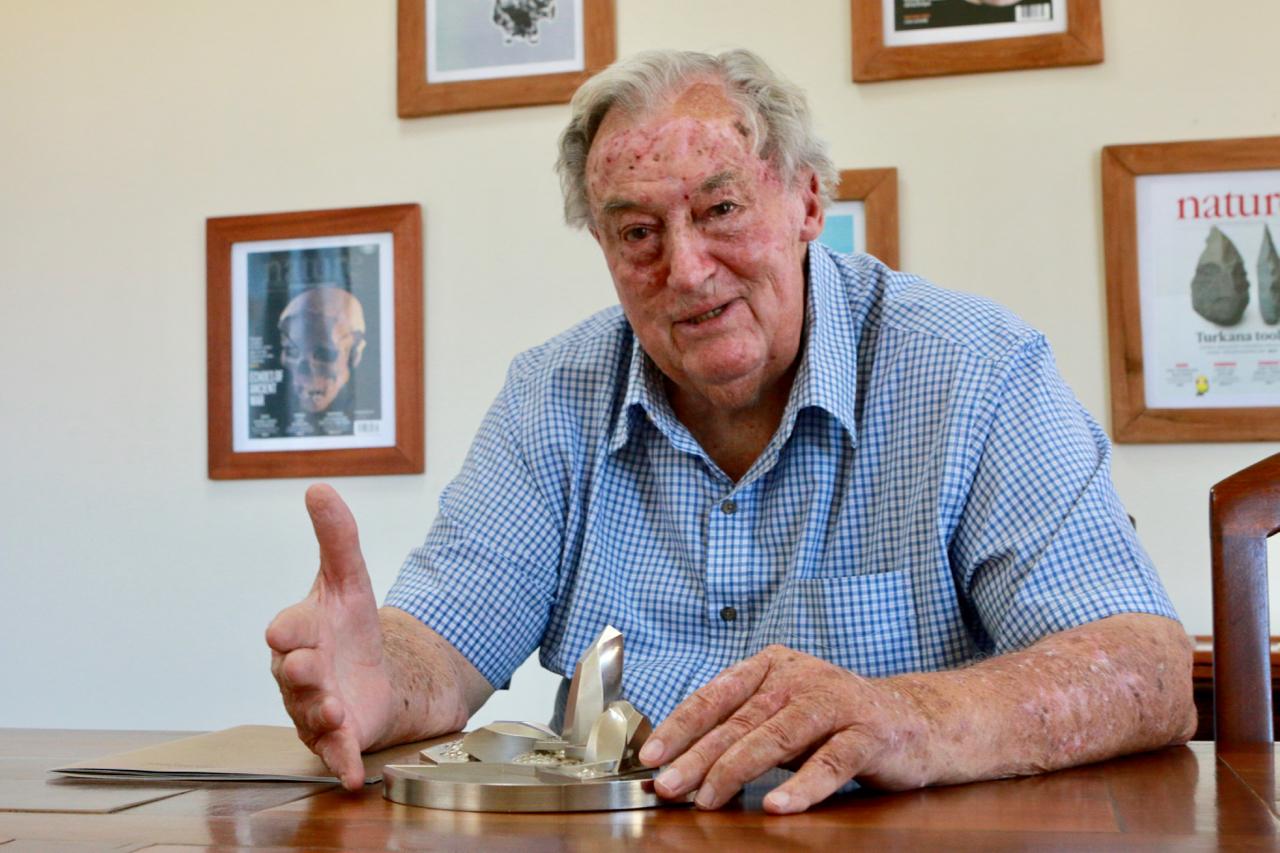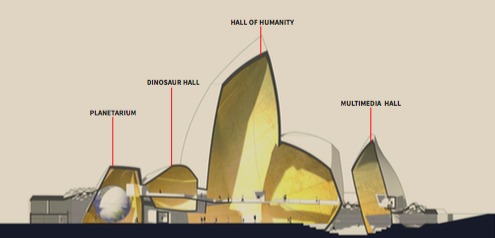World-renowned paleoanthropologist Richard Leakey commissions new museum in Kenyan desert
The building, designed by the architect who rebuilt New York's World Trade Center, will house iconic scientific finds

The architect who rebuilt the World Trade Center in New York has started work on a new museum celebrating human evolution that Richard Leakey has commissioned in the remote deserts of northern Kenya.
Leakey, famous for discovering the most complete skeleton of an early human known as Turkana Boy, wants the building to become a magnet drawing tourists to one of the planet's least-visited spots.
After finally securing key funding earlier this month, Leakey told The Independent that he had instructed Daniel Libeskind's firm to start drawing up plans for what he calls 'the cathedra'.
It is to be constructed at Lake Turkana, 400 miles north of Nairobi, Kenya's capital, near the border with Ethiopia, where palaeontologists including Leakey and his teams have found many of the best-preserved fossils of man's ancient ancestors.
“I took Libeskind up to Turkana and had him see the place and listen to me chat, after which I asked, 'can we do something here that will absolutely stand-alone and wow?',” Leakey said in an exclusive interview.
“He immediately said yes. He said it could be one of the most important things he's done, and he's terribly excited about it.”
Early design ideas show a cluster of irregularly-shaped buildings inspired by Stone Age hand axes and other tools unearthed nearby. The central hall rises 15-storeys above the desert. The site's footprint's shape is the outline of the African continent.

The buildings will house and display some major fossils, but Leakey insists he is not interested in “displays locked away behind glass in cabinets”.
“The physical location of the actual bones is becoming increasingly irrelevant,” he said. “The people I'm talking to about this, if they have a museum pedigree, I'm basically eliminating them. I want people from Silicon Valley, or who have done something fantastic in advertising, something very creative indeed.
“Maybe we don't want to exhibit the original [fossils] at all. Why don't we have a room you come in to wearing a 3D headset and sit quietly in the middle of a band of Homo erectus moving all around you? That's much more interesting than a skeleton of Turkana Boy behind glass.”
As well as the new World Trade Center, Libeskind has built major museums including the Jewish Museum in Berlin and the Imperial War Museum North in Manchester. His buildings are renowned for their angularity and projecting pointed rooflines.
Working in Lake Turkana will be a little different. It is famous for its enormous Nile crocodiles and flocks of greater and lesser flamingos, and lies in a desert landscape where temperatures regularly exceed 35C.
Not far away is the border with South Sudan, mired in a long-running civil war. People living around Lake Turkana are nomads notorious for cattle-stealing wars with neighbouring tribes.
There are currently no tarred roads to the proposed site, and only a dirt airstrip. The landscape has scarce water, and no grid power.
But Leakey is sure these difficulties will be overcome. The Turkana County government, which fully supports his vision, has committed to upgrading roads and building an airport to take passenger jets. Libeskind is planning a building run entirely from renewable energy with a zero-carbon footprint, Leakey said.
“We're as keen to make the technicalities of the building as ground-breaking as its overall design,” Leakey said. He concedes that it will cost “a very great deal of money, we're talking £80m-plus”.
Oil firms prospecting in the Turkana region, including Britain's Tullow Oil, gave Leakey the GBP2.3m he needed to get Libeskind started, but securing the money to complete the work will take enormous energy.
Leakey, who is 72, is also the chairman of the Kenya Wildlife Service, a near-full time job keeping him in Nairobi for long stretches. He is also committed first to finishing the setting up of the Turkana Basin Institute, a scientific and research institute he helped establish to continue the work searching for and studying fossils.
“The Turkana Basin Institute is the repository for the specimens and ongoing research by international and Kenyan scientists,” Leakey said. “The cathedra is the 'wow' telling the story behind them.”
Most of Kenya's world-class fossil trove is currently housed in a cramped museum complex in the polluted heart of traffic-clogged Nairobi.
The palaeoanthropology section is in a side room that lacks the prominence Leakey believes it deserves. Moving the focus to Turkana is only right, he argues. He hopes construction could start as soon as 2019.
“The geology and the history of Turkana means we can trace the human story from basically today continuously back to just under five million years ago in one place,” Leakey said.
“That’s a pretty special story. Telling it where it took place and where the entire theatre of humanity has played out has a sort of symbolic resonance that makes it iconic.
“If you dare use the word in this context, it is somewhat of a spiritual journey that I think that would resonate with people and cultures across the world.”
In response to this article, Henry Sands of The National Museums of Kenya, said: "Our prehistoric collection, which is one of the largest and most complete record, includes some of the world’s finest remains of early humans. These collections are well stored in a Secure Room from where they are studied and conserved. Other fossils found in association with the human fossils include large collections of many vertebrate fossils, fossilized plants and fossil soils as well as archaeological materials including stone tools.
"We continue to grow and develop, overseen carefully by a crop of well trained professional scientists, over 50 of whom are Doctoral Degree holders. We are about to embark on one of the most innovative digitisation projects in the museum world and plan to construct a new Research and Collections centre that will house the continuously expanding collections and provide a more conducive environment for cutting-edge research on Kenya’s natural and cultural heritage. We are also working closely with Digital Divide Data to capture over 10,000 records relating to Kenya’s diverse palaeontological and archaeological material."
Join our commenting forum
Join thought-provoking conversations, follow other Independent readers and see their replies
Comments